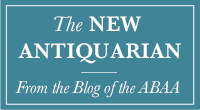Member Ken Karmiole Founds Endowment Fund to Support UCLA's Archival Studies Programs and Lectu
By Susan BenneABAA member Ken Karmiole (Kenneth Karmiole, Bookseller, Inc.) has generously given UCLA's Graduate School of Education & Information Studies (GSE&IS) a $100,000 endowment to support Archival Studies and Lectures. “This wonderful gift will greatly enrich our work by supporting a variety of high-profile programs such as symposia and visiting lecturers that will bring leading expertise from around the globe to UCLA,” said Anne Gilliland, Professor of Information Studies and Moving Image Archives and Director of the Center for Information as Evidence. “It will also highlight the ground-breaking contributions of our own faculty and students to the field of Archival Studies.” Ken said he wants to "see UCLA become a place for people interested in rare books and manuscripts and historical materials." "Archival material is going to become more and more significant," he continued. "University libraries want to differentiate themselves from one another by the unique material they have. Because UCLA already has a great facility in this area, they are one of the in the country." Ken is an alumnus of the GSE&IS's MLS program, and this is not the first endowment he's made to his alma mater. In 2002, he provided funds to establish a fellowship in his name that annually supports one student in the study of rare books and manuscripts. Ken then established the Kenneth Karmiole Endowment for Rare Books and Manuscripts in 2006, a gift that helps finance UCLA's acquisitions for special col... [more Member Ken Karmiole Founds Endowment Fund to Support UCLA's Archival Studies Programs and Lectu]

